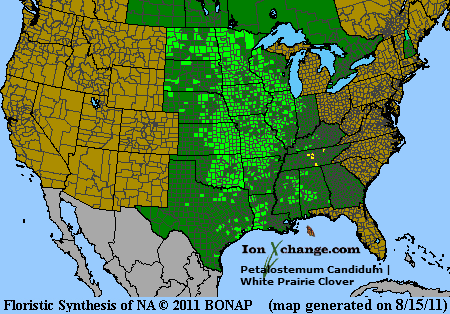 Loading... Please wait...
Loading... Please wait...- Home
- SEEDS
- SEED MIXES
- BUY PLANTS
- Info Request
-
Educational Videos
- Greenhouse Transplanting Demonstration
- Native Seed Cleaning demonstration at Ion Exchange Native Seed and Plant Nursery
- Attracting Butterflies
- Bidens - Bidens cernua Harvest Video
- Big Blue Stem Harvest
- Butterfly Milkweed Video
- Button Blazingstar - Liatris aspera Video
- Buttonbush - Cephalanthus occidentalis Video
- Canada Anemone - Anemone canadensis Harvest Video
- Cardinal Flower - Lobelia cardinalis Video
- Control Burn - Wildflower Field
- Cream Gentian - Gentiana flavida
- Culver's Root - Veronicastrum virginicum Video
- Cup Plant - Silphium perfoliatum Video
- Dormant Seeding | Planting
- Earthyman's Favorite Wildflowers Video
- Eco-Friendly Golf Course Seed Mix
- Floating Islands
- Fringed Loosestrife - Lysimachia ciliata Video
- Giant Yellow Hyssop - Agastache nepetoides Video
- Indiangrass - Sorghastrum nutans Video
- Iowa Prairie Partner Program
- Leadplant - Amorpha canescens (Potted) Video
- Meadow Blazingstar - Liatris ligulistylis
- Midland Shooting Stars - Dodecatheon meadii Video
- Native Plant Nursery Field Irrigation Experiment
- Nodding Onion - Allium cernuum Video
- Ohio spiderwort - Tradescantia ohiensis Video
- Old Man's Beard - Clematis virginiana blooms Video
- Oxeye Sunflower - Heliopsis helianthoides Video
- Prairie Spiderwort - Tradescantia bracteata
- Purple Coneflower - Echinacea purpurea Video
- Rain Garden or Water Garden Video
- Rattlesnake Master - Eryngium yuccifolium Video
- Riverbank Stabilization - Wetland Plants
- Rose Mallow - Hibiscus militaris Video
- Rosinweed - Silphium integrifolium Video
- Royal Catchfly - Silene regia
- Showy Tick Trefoil - Desmodium canadense Video
- Sneezeweed - Helenium autumnale Video
- Swamp Betony - Pedicularis lanceolata Video
- Swamp Milkweed - Asclepias incarnata Video
- Sweet Blackeyed Susan - Rudbeckia subtomentosa Video
- Tall Coreopsis - Coreopsis tripteris Video
- Urban Butterfly Garden
- Wild Bergamot - Monarda fistulosa Video
- Wild Geranium - Geranium maculatum Harvest
- Wild Goldenglow - Rudbeckia lanciniata Video
- Wild Petunia - Ruellia humilis Harvest Video
- Woodland Knotweed - Polygonum virginianum Video
- Yellow Coneflower - Ratibida pinnata Video
- Blog
- Resources
- Policies
Contact Us
Phone:
563-419-0837
or 563-535-7231
Email:
hbright@ionXchange.com
Browse Products
Add to Wish List
You Recently Viewed...
Our Newsletter
Product Description
White Prairie Clover, Thimbleweed, White Tassel Flower"
| Sun Exposure | Prairie, Savanna |
| Soil Moisture | Mesic, Dry Mesic, Dry |
| Bloom Time |
Summer, Fall June, July, August, September |
| Bloom Color | White |
| Max Height | 2 feet |
| Wetland Code | UPL |
| Germ Code | A,J,I |
| Seeds Per Packet | 750 |
| Seeds Per Ounce | 19,000 |
Found throughout the Tallgrass Prairie region in native prairies and prairie remnants on dry or well-drained soils. Often found with P. purpureum. Blooms from May to September. Not a typical legume flower, having one large petal and four smaller ones. The tiny flowers grow tightly together on the cone at the top of the stem.
This was one of the favored plants of the Native Americans of the prairies. A tea made from the leaves was applied to open wounds and a tea made from the bruised leaves steeped in hot water was used to aid in the healing of wounds as well. Some tribes pulverized the root and made a tea from that powder that was a very healthy drink and a preventative medicine. Some tribes used the entire plant as a prophylactic (medicine which preserves or defends against disease; a preventive). Early settlers mixed the bark of the white oak tree and the flowers of this species to make a medicine for diarrhea. The Ponca tribe was known to chew the roots of prarie clover simply for the pleasant taste. Native American women also gathered the stems of prairie clover and made brooms and brushes from them when dried. The Pawnee name for this species literally translates as "broom-weed".
In Europe, especially in Ireland and Scotland, the seeds of prairie clover were ground into a flour. The flour made a very tasty and highly nutritous bread.
Edible Uses: Root - raw or chewed for its pleasant sweet flavour]. Eaten as a delicacy by children. A tea-like beverage is made from the dried leaves.
Medicinal Uses: The roots have been chewed to bring relief from the pain.
Herbal Uses: Unknown













